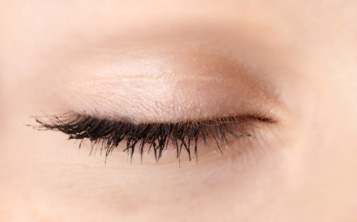| |
"Beauty comes as much from the mind as from the eye."
- Grey Livingston |
|
 |
 |
|
Cosmetic Surgery>>
Eyelid Surgery
If You're Considering Eyelid Surgery...
Eyelid surgery (technically called blepharoplasty) is a procedure to remove fat--usually along with excess skin and muscle from the upper and lower eyelids. Eyelid surgery can correct drooping upper lids and puffy bags below your eyes - features that make you look older and more tired than you feel, and may even interfere with your vision. However, it won't remove crow's feet or other wrinkles, eliminate dark circles under your eyes, or lift sagging eyebrows. While it can add an upper eyelid crease to Asian eyes, it will not erase evidence of your ethnic or racial heritage. Blepharoplasty can be done alone, or in conjunction with other facial surgery procedures such as a facelift or browlift.
If you're considering eyelid surgery, this information will give you a basic understanding of the procedure-when it can help, how it's performed, and what results you can expect. It can't answer all of your questions, since a lot depends on the individual patient and the surgeon. Please ask us about anything you don't understand.

 |
The Best Candidates for Eyelid Surgery
Blepharoplasty can enhance your appearance and your self-confidence, but it won't necessarily change your looks to match your ideal, or cause other people to treat you differently. Before you decide to have surgery, think carefully about your expectations and discuss them with Dr. Marshak.
The best candidates for eyelid surgery are men and women who are physically healthy, psychologically stable, and realistic in their expectations. Most are 30 or older, but if droopy, baggy eyelids run in your family, you may decide to have eyelid surgery at a younger age.
A few medical conditions make blepharoplasty more risky. They include thyroid problems such as hypothyroidism and Graves' disease, dry eye or lack of sufficient tears, high blood pressure or other circulatory disorders, cardiovascular disease, and diabetes. A detached retina or glaucoma is also reason for caution; check with your ophthalmologist before you have surgery.
All Surgery Carries Some Uncertainty and Risk
When eyelid surgery is performed by a qualified plastic surgeon, complications are infrequent and usually minor. Nevertheless, there is always a possibility of complications, including infection or a reaction to the anesthesia.
The minor complications that occasionally follow blepharoplasty include double or blurred vision for a few days; temporary swelling at the corner of the eyelids; and a slight asymmetry in healing or scarring. Tiny whiteheads may appear after your stitches are taken out; your surgeon can remove them easily with a very fine needle.
Following surgery, some patients may have difficulty closing their eyes when they sleep; in rare cases this condition may be permanent. Another very rare complication is ectropion, a pulling down of the lower lids. In this case, further surgery may be required.
|
|
|
|
|



